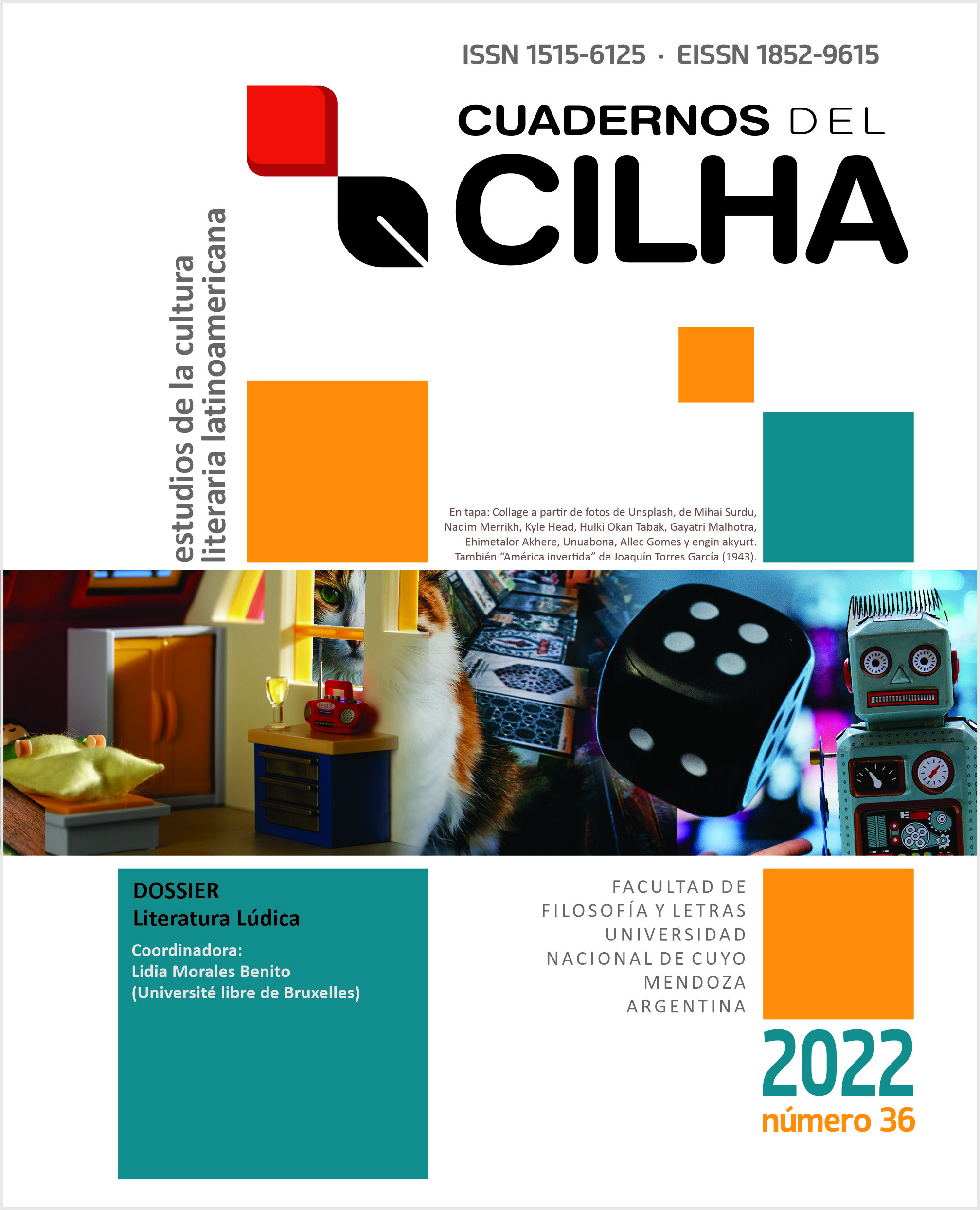La autoficción especular como juego ficcional. En Lluvia de Victoria de Stefano
DOI:
https://doi.org/10.48162/rev.34.041Palabras clave:
Autoficción, Especularidad, Juego, Lluvia, Victoria de StefanoResumen
Victoria de Stefano escribe un tipo de literatura autorreferencial. En la estructura de sus novelas, se hace una reflexión explícita sobre la compleja relación que existe entre la realidad y la ficción. Al hacer esto, produce un doble efecto. Por un lado, subraya la artificialidad del texto. Por otro, cuestiona los límites de la ficción. En otras palabras, la mayor parte de su literatura entra dentro de la categoría de la metaficción y, tal como señala Guyard, “los teóricos de la metaficción insisten en el hecho —indudable, por otra parte— de que el texto metaficcional cuestiona los límites entre lo real y lo ficticio” (2012: 59-60). Lluvia (2006) recoge los elementos mencionados arriba para producir un texto autoficticio marcadamente autorreferencial y especular. Partiendo de esta premisa, se puede afirmar que la obra en cuestión propone un juego al lector, lo hace cómplice de la creación literaria. No solo, crea una paradoja irresoluble que es el centro de la reflexividad de la ficción. En este estudio se analizará el funcionamiento de dicha estructura y su relación con lo que podríamos llamar la ficción lúdica (Robert Detweiler), un modo literario que hace al lector cómplice al revelar la artificiosidad texto. El objetivo central será analizar cómo este juego literario define la novela de Stefano, que puede ser estudiada desde la noción de “autoficción especular”, y sirve para acentuar su tema central, la creación literaria, no solo al exponerla en la diégesis sino al hacer que el lector participe indirectamente de ella.
Citas
Alberca, M. (2007). El pacto ambiguo. De la novela autobiográfica a la autoficción. Biblioteca Nueva.
Casas, A. (2015). “Lo fantástico y la autoficción: un binomio casi imposible”. En N. Álvarez Méndez y A. Abello Verano (eds.) En Espejismos de la realidad. Percepciones de lo insólito en la literatura española (siglos XIX-XXI) (págs. 85-94) Universidad de León.
Colonna, V. (1989). L’Autofiction. Essai sur la fictionalisation de soi en littérature. Hal Open Science. [tesis de doctorado, Université Lille, École des hautes Études en Sciences Sociales]. https://tel.archives-ouvertes.fr/tel-00006609
Colonna, V. (2004). Autofiction & autres mythomanies littéraires. Tristam.
Dällenbach, L. (1991). El relato especular. Visor.
Doubrovsky, S. (2001). Fils. Galileé. (Original publicado en 1977).
Genette, G. (1993). Ficción y dicción. Lumen. (Original publicado en 1991).
Genette, G. (1989a). Figuras III. Lumen. (Original publicado en 1972)
Genette, G. (1989b). Palimpsestos: la literatura en segundo grado. Taurus. (Original publicado en 1982)
Guyard, E. (2012). “Para un acercamiento a la recepción de los textos de metaficción”. En M. Álvarez, A. J. Gil González y M. Kunz (ed.), Metanarrativas hispánicas (págs. 55-71). Lit.
Hutcheon, L. (2013). Narcissistic Narrative. The Metafictional Paradoz. Methuen. (Original publicado en 1980).
Lotman, Y. (1978). La estructura del texto artístico. Istmo. (Original publicado en 1970).
Morales Benito, L. (2021). El arte del funámbulo. Juego, ‘Patafísica y OuLiPo, aproximaciones teóricas y equilibrismos literarios. Universidad Iberoamericana Puebla.
Stefano, V. de (1985). La noche llama a la noche. Monte Ávila Editores.
Stefano, V. de (1992). El lugar del escritor. Siglo XXI.
Stefano, V. de (2006). Lluvia. Candaya.
Toro, Vera (2017). “Soy simultaneo”. El concepto poetológico de la autoficción en la narrativa hispánica. Iberoamericana/Vervuert.
Twain, M. (2015a). The adventures of Hucckeberry Finn. Maxtoer. (Original publicado en 1876).
Twain, M. (2015b). The adventures of Tom Sawyer. Maxtor. (Original publicado en 1885).
Descargas
Publicado
Cómo citar
Número
Sección
Licencia
Derechos de autor 2022 Javier Ignacio Alarcón Bermejo

Esta obra está bajo una licencia internacional Creative Commons Atribución-NoComercial 4.0.












































